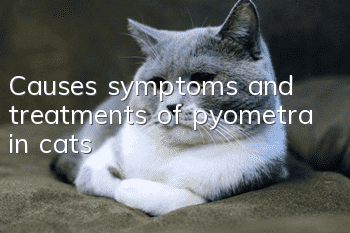How many degrees does a cat have to have a fever? How to treat a cat’s fever

What is a fever in a cat? The body temperature of a cat is slightly higher than that of a human, about 38 degrees. So, when the body temperature of a cat exceeds how many degrees, does it fall into the fever range?
How many times does a cat have a fever?
The so-called fever means that the current body temperature of a dog or cat is higher than the normal temperature. In clinical terms, it is also called fever. So what is the normal body temperature of our little babies? Adult dogs: 37.5-38.5, small friends: 38.5-39, cats: 38.5-39
If babies really have a fever, they cannot tell their parents how they feel in person, so parents need to judge whether they are suffering from a fever based on some indicator tests and symptoms. At present, there is always such a wrong judgment experience among the people: using the dryness of the noses of cats and dogs to judge whether the animals are healthy.
When cats and dogs have a fever, how should poop scrapers respond and treat it?
Low-grade fever (less than 39.5) can be left untreated! This is the baby's body fighting against the disease. Parents can first perform some auxiliary treatment at home, but when the temperature soars and reaches 39. 5 or higher, or the fever lasts for more than 24 hours, and the baby refuses to drink water, then you need to see a pet doctor immediately.
The following introduces several auxiliary treatments that pet owners can perform at home. Of course, this only applies to cats and dogs with low fever or when waiting for instructions from the pet doctor. These auxiliary measures will make your baby feel comfortable temporarily, but Remember, if the fever is severe, you must be sent to the animal hospital!
Check if the babies are dehydrated
Determine whether your baby is dehydrated by simply lifting and pinching the skin to observe its elasticity. If the skin quickly returns to its original shape after lifting the skin and letting go, it means the skin has good elasticity and the cat or dog is not dehydrated. If the skin recovery is delayed or slow, then subcutaneous rehydration is required under the guidance of an animal doctor.
Replenish water and electrolytes
Please provide your babies with plenty of clean water at home. You can place it in different places at home (where the babies can easily find it) so that they can drink water at any time. If your baby refuses to drink water, you can Use an eye drop bottle (be sure to clean it beforehand) or a small straw to take a small amount of water and feed it to them. In addition, when cats and dogs are dehydrated, minerals will be consumed, and we need to replenish electrolytes for them. You can purchase electrolyte supplements from Abbott Laboratories or purchase electrolytes from Medical ElectronicsSupplements. Some little ones prefer chicken, beef soup, or tuna sweat; as long as they can eat, try to choose whichever they like!
Ice application
Use a special ice pack or towel to wrap ice cubes and rotate them on the important parts of cats and dogs to cool down. These important parts include the baby's abdomen, paw pads and armpits. In addition, you can use medical alcohol to wipe the paw pads to cool down. However, if your little one has the habit of licking his paws, make sure that the dog cannot lick it when using alcohol ice compress, and then wipe it clean after applying cold compress.
Cold bath
If necessary, you can try to put the cat or dog in cold water (25-27 degrees) for 5-10 minutes, which can quickly reduce the body temperature. Of course, after a cold bath, make sure your cat or dog’s hair is completely dried. In addition, after taking a cold water bath, animals should avoid sleeping in a ventilated area.
Tips
Don’t give ibuprofen or acetaminophen (the main ingredients in cold medicines) to your cats or dogs. In addition, cats should not be given acetaminophen or any over-the-counter analgesics. If you want to use medicine to cool your baby, please contact your pet doctor for guidance on medication.
- How to deworm a one-month-old cat?
- What does the silver gradient look like with a blue and white cat?
- Take two bites when the cat licks its fur
- Will a cat’s fever subside on its own after being neutered?
- There are transparent threads on the cat’s eyeballs
- Will cats definitely develop pyometra if they are not neutered?
- What should I do if my cat howls at night?
- How many times a month does a cat vomit hairballs?
- Why does a Siamese cat bite you more and more when it hits you?
- Will kittens get cold if the room temperature is 18°C?



